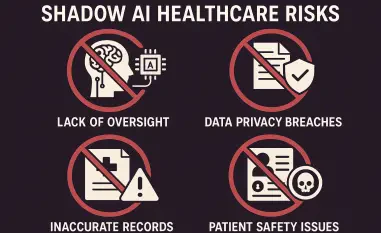In an ever-evolving digital landscape, browser security remains more relevant than ever. With Google’s recent release of the Chrome 137 update, the spotlight turns to the browser’s efforts to safeguard users against critical vulnerabilities. This update comes in the wake of an alarming zero-day flaw identified in Chrome’s V8 JavaScript engine. The significance of such vulnerabilities cannot be overstated, as they pose substantial security threats to the millions relying on the browser daily. Gathering perspectives from cybersecurity experts and industry leaders, this roundup aims to delve into the complexities and implications of Chrome’s decisive action against these threats.
Contextualizing Zero-Day Vulnerabilities and Chrome’s Importance
Zero-day vulnerabilities represent significant threats due to their potential to be exploited before patches can be developed. Experts have pointed out that these vulnerabilities provide opportunities for attackers to access systems or data unexpectedly, and their discovery often prompts swift action from companies like Google. Google’s focus on addressing these issues emphasizes the critical nature of browser security, as browsers serve as the primary interface between users and the web.
The recent developments in Chrome’s security underscore the browser’s foundational role in protecting user privacy and data integrity. As some industry leaders suggest, maintaining a secure browsing experience is not just about preventing attacks but also about fostering trust and confidence among users. It’s widely accepted that the responsive approach taken by major tech firms, such as Google, reflects their commitment to combating security issues as soon as they arise.
The Zero-Day Flaw Exploitation: CVE-2025-5419
The zero-day flaw termed CVE-2025-5419 has garnered attention due to its high severity. While Google has not disclosed detailed information regarding the specific exploit, the acknowledgment of its existence signals a pressing concern for cybersecurity professionals. Many experts agree that vulnerabilities like these, designed to allow out-of-bounds read and write exploits, could enable malicious actors to execute arbitrary code, posing serious risks.
Insights from professionals in the field highlight the particular dangers posed by this flaw and its exploitation potential. Some point out that such vulnerabilities are often sought by spyware vendors and other malicious entities, emphasizing the importance of addressing them swiftly. The heap corruption caused by this vulnerability merely exemplifies the sophisticated nature of modern cybersecurity threats.
Addressing Additional Vulnerabilities and Industry Reactions
In addition to the noted zero-day flaw, Chrome’s update also addresses other vulnerabilities, such as CVE-2025-5068, a medium-severity use-after-free issue in the Blink engine. The recognition and patching of these defects highlight the multifaceted approach required in modern browser security. Experts agree that tackling multiple vulnerabilities simultaneously is essential to maintaining comprehensive cyber defenses.
The broader security community has observed Google’s collaborative efforts with researchers and developers, citing it as a powerful example of how collective intelligence can lead to more robust security ecosystems. This cooperation not only enhances the browser’s security posture but also encourages other companies to adopt similar strategies, fostering a unified front against cyberthreats across the industry.
Anticipating Emerging Threats and Debunking Browser Security Myths
Looking forward, experts predict an increase in sophisticated cyber threats as technology advances. The anticipation of new threat patterns aligns with the constant need for evolving security measures in browsers like Chrome. Regional security differences also come into play, with some areas experiencing higher threat levels due to varying threat actors and motivations.
The conversation around browser security often involves debunking myths, such as the idea that browsers are inherently insecure or that updates are unnecessary if no issues are immediately apparent. By consistently updating software and remaining vigilant, users and companies alike can combat misconceptions, ensuring stronger protections across the board.
Broader Implications of Chrome’s Security Strategy
Chrome’s proactive stance in addressing security vulnerabilities underscores its leadership in browser security innovation. By comparing Chrome’s strategies to those of other browsers, some experts note the browser’s enhanced focus on update frequency and precision. While no approach is without its challenges, Chrome’s adherence to swift patching protocols is often praised as exemplary.
As the digital world continues to evolve, these developments could shape future security strategies. The narrative around Chrome’s updates might further influence how other browsers prioritize security, encouraging more robust defenses industry-wide.
Key Takeaways and Strengthening Cyber Defenses
The release of Chrome’s latest update reaffirms essential security lessons in the battle against zero-day threats. Understanding these flaws and responding rapidly are vital for maintaining safe browsing environments. Implementing best practices and enhancing cyber defenses ensures continued protection against evolving challenges.
Incorporating practical tips, like regular software updates and vigilance against suspicious activities, can significantly bolster overall security measures. Applying insights from recent developments in browser technology could play a crucial role in preparing for future cybersecurity challenges.
Reflecting on Progress and Future Security Directions
Reflecting on Google’s recent update, it’s clear the fight against zero-day threats requires constant vigilance and innovation. Companies must remain proactive, consistently seeking new solutions and improving existing security measures. Moving forward, continued collaboration and a proactive mindset will be essential in navigating the complexities of the cybersecurity landscape. By encouraging forward-thinking strategies and a safety-first approach, the industry can continue to protect users from emerging threats effectively.













